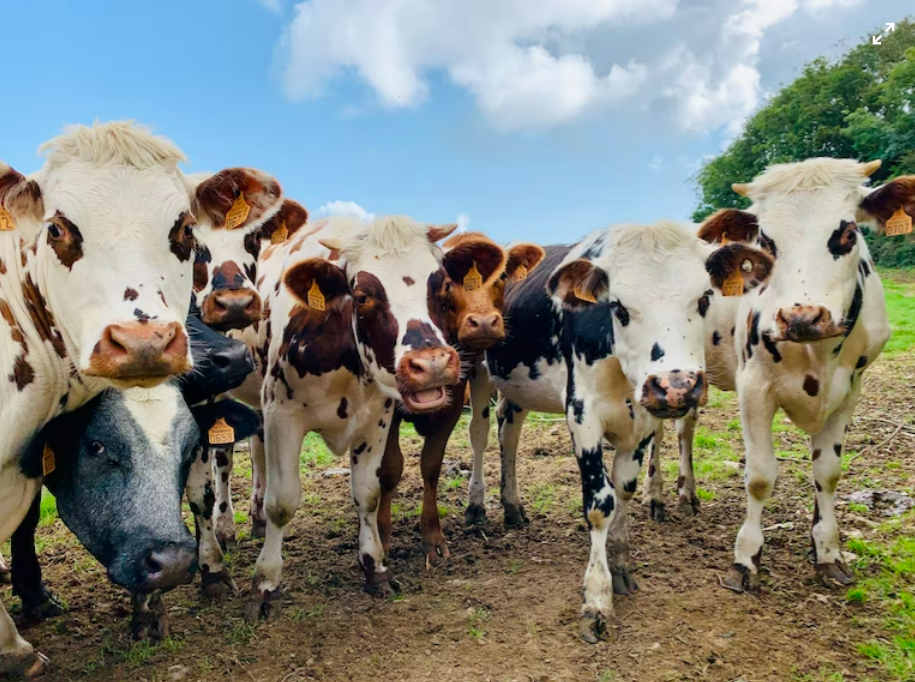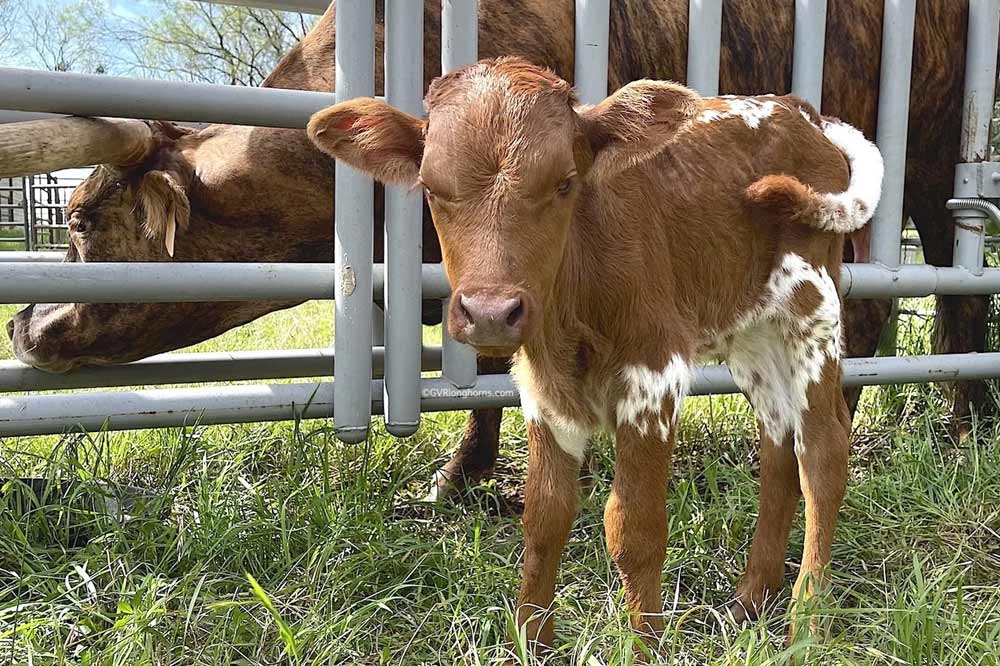How Much Does a Cow Cost? Unveil the Price Factors!

A cow can cost anywhere from $500 to $3,500 depending on various factors like age, breed, and purpose. In general, dairy cows tend to be more expensive than beef cows due to their ability to produce milk.
Cows have been domesticated for thousands of years and have become a staple in many cultures around the world. Whether it’s for milk, meat, or even as pets, cows have proven to be valuable animals. However, the cost of buying a cow can vary greatly depending on several factors.
The breed of cow, its age, gender, and intended purpose all play a significant role in determining its price. Additionally, factors like location and market demand can also impact the cost of purchasing a cow. We will explore the different factors that can affect the cost of a cow and provide an overview of what to expect when buying one.

Credit: ranchr.ag
Decoding Cow Prices
When it comes to buying a cow, understanding the factors that influence its cost is crucial. Decoding cow prices involves taking a closer look at breed variations and regional price differences. Let’s explore these aspects to gain a better understanding of how much a cow may cost.
Breed Variations
Breed plays a significant role in determining the price of a cow. Different breeds have distinct characteristics and attributes that can impact their value. Here are some popular cattle breeds and their average price ranges:
| Breed | Average Price Range |
|---|---|
| Angus | $1,500 – $3,000 |
| Hereford | $1,200 – $2,500 |
| Charolais | $2,000 – $4,000 |
| Holstein | $1,000 – $2,500 |
These price ranges can vary based on factors such as the age, health, and genetics of the cow. Additionally, certain breeds may have higher demand in specific markets, leading to higher prices.
Regional Price Differences
The cost of a cow can also vary depending on the region or location. Factors such as supply and demand, transportation costs, and local market conditions can influence regional price differences. Here are some examples of regional price variations:
- In the Midwest, where cattle farming is prevalent, prices may be lower due to higher supply.
- In regions with limited grazing land, such as the Northeast, prices may be higher due to increased production costs.
- In areas with a strong beef industry, like Texas, prices may fluctuate based on market conditions and competition.
It’s important to consider these regional price differences when estimating the cost of a cow, as they can significantly impact your budget and purchasing decisions.
By decoding cow prices and understanding breed variations and regional differences, you can make informed choices when buying a cow. Remember to thoroughly research the market, consult with experts, and assess your specific needs before making a purchase.
Initial Purchase Vs. Lifetime Costs
When considering the cost of owning a cow, it’s important to weigh the initial purchase price against the lifetime expenses. Understanding the upfront investment and ongoing expenses will help you make an informed decision about this long-term commitment.
Upfront Investment
Initial costs for purchasing a cow can vary depending on factors such as breed, age, and health. A healthy dairy cow can range from $1,000 to $3,000, while a beef cow may cost between $1,200 to $2,500. Additionally, you’ll need to consider expenses for essential items such as fencing, shelter, and water troughs, which can amount to $1,000 to $2,000.
Ongoing Expenses
Once you’ve made the initial investment, it’s crucial to account for the ongoing expenses of cow ownership. This includes feed costs, which can add up to $200 to $300 per year per cow. Veterinary care, including vaccinations and check-ups, can average around $300 to $500 annually. Furthermore, housing maintenance and equipment repairs can amount to $500 to $1,000 per year.
Age And Productivity
The cost of a cow varies based on age and productivity, with factors like breed and purpose influencing prices. Younger cows are generally cheaper but may require more time to reach peak productivity compared to mature cows. Understanding these factors is crucial when determining the cost of acquiring a cow for your specific needs.
Milk Yield Impact
One of the key factors influencing the cost of a cow is its age and productivity. The age of a cow can significantly impact its milk yield, which directly affects its value. Younger cows generally have lower milk yields compared to mature cows. It takes time for a cow to reach peak milk production, usually around the age of four to six years. After this age, their milk yield tends to stabilize and remain consistent for a certain period.
When considering the cost of a cow, it is essential to evaluate its milk yield impact. Cows with higher milk yields are typically more valuable and can generate greater profits for dairy farmers. These cows have the potential to produce larger quantities of milk, which can contribute to increased revenue and business growth.
Breeding Potential
Aside from milk yield, another important aspect of a cow’s productivity is its breeding potential. Cows that have a proven track record of successful breeding and calving are highly sought after in the market. These cows possess valuable genetics that can be passed on to their offspring, resulting in healthier and more productive calves.
When assessing the cost of a cow, its breeding potential plays a significant role. The ability to produce high-quality offspring is a desirable trait in the dairy industry, as it ensures the continuation of a productive and profitable herd. Cows with excellent breeding potential often command higher prices due to their ability to contribute to the overall genetic improvement of a herd.
In conclusion, the age and productivity of a cow are crucial factors to consider when determining its cost. The milk yield impact and breeding potential are both influential in determining the value and profitability of a cow. By carefully evaluating these factors, farmers can make informed decisions about the purchase of cows that will contribute to the success of their dairy operations.
Health And Vaccination Records
When it comes to purchasing a cow, it is crucial to consider the health and vaccination records of the animal. Proper veterinary care and immunization influence the overall well-being and productivity of the cow, ensuring a successful investment.
Veterinary Care
Veterinary care plays a vital role in maintaining the health of a cow. Regular check-ups and examinations by a qualified veterinarian are essential to identify and address any potential health issues. These check-ups help prevent diseases, detect infections, and ensure the overall well-being of the cow.
During the veterinary visits, the cow’s weight, temperature, and general condition are assessed. The veterinarian will also evaluate the cow’s dental health, hoof condition, and the presence of any parasites. If any health concerns are identified, appropriate treatments and medications are administered to promote recovery.
Immunization Influence
Immunization is a critical aspect of cow health management. Vaccinations protect cows from various diseases and help maintain a healthy immune system. When purchasing a cow, it is important to obtain accurate immunization records to ensure that the animal has received the necessary vaccines.
The specific immunizations required may vary depending on factors such as geographical location, breed, and intended use of the cow. Common vaccinations for cows include those for diseases such as bovine viral diarrhea (BVD), infectious bovine rhinotracheitis (IBR), and clostridial infections.
Regular vaccination schedules should be followed to ensure the cow’s immunity remains strong and effective. It is essential to keep track of vaccination dates and administer booster shots as recommended by the veterinarian.
By prioritizing proper veterinary care and immunization, you can ensure that your cow remains healthy and productive. Regular check-ups and vaccinations contribute to the longevity and overall well-being of the animal, safeguarding your investment in the long run.
Feed And Nutrition
When it comes to raising cows, feed and nutrition are critical factors that contribute significantly to the overall cost. Providing the right diet and supplements ensures the health and productivity of the cows, which ultimately impacts the farm’s profitability.
Diet Requirements
Cows have specific dietary needs that must be met to maintain their health and productivity. The primary components of a cow’s diet include grasses, legumes, grains, and forages.
Supplement Costs
Supplements are often necessary to ensure that cows receive all the essential nutrients for optimal health and growth. Common supplements include minerals, vitamins, and protein sources.
Credit: www.quora.com
Housing And Maintenance Needs
When considering the cost of owning a cow, it’s essential to account for the housing and maintenance needs. Proper shelter, land, and fencing are crucial for the well-being of the cows and the success of the operation.
Shelter Considerations
Shelter is crucial for protecting the cows from harsh weather conditions such as extreme heat, cold, and rain. A well-ventilated barn or a three-sided shed can provide adequate protection. The shelter should be spacious enough to accommodate the cows comfortably, allowing them to lie down and move around freely.
Land And Fencing
Adequate land and fencing are necessary for grazing and exercise. Cows require ample space to roam and graze, so it’s important to have enough land to support their dietary needs. Fencing should be secure and well-maintained to prevent the cows from wandering off and to protect them from predators.
Market Fluctuations
Supply And Demand
Supply and demand impact cow prices.
Economic Trends
Economic trends influence cow costs.
Additional Factors Affecting Price
Organic vs. Conventional
Organic cows typically cost more due to higher production costs.
Cows with show quality and impressive pedigree demand premium prices.

Credit: gvrlonghorns.com
Frequently Asked Questions
How Much Does A Cow Cost On Average?
The cost of a cow varies depending on factors such as breed, age, and location. On average, a cow can cost anywhere from $500 to $3000.
What Is The Cost Of Owning A Cow?
The cost of owning a cow includes feed, veterinary care, equipment, and shelter. These expenses can add up to an average of $500 to $1000 per year.
How Much Land Do I Need To Keep A Cow?
The amount of land required to keep a cow depends on various factors such as the breed, age, and the number of cows you have. Generally, one cow needs about 2 to 5 acres of land for grazing.
What Are The Annual Expenses Of Raising A Cow?
The annual expenses of raising a cow include feed, veterinary care, equipment, and shelter. These expenses can add up to an average of $500 to $1000 per year.
Conclusion
In considering the cost of a cow, various factors come into play. From breed to age, prices can vary significantly. It’s essential to research and budget wisely when investing in livestock. Ultimately, understanding the expenses involved can help make informed decisions in the agricultural sector.



